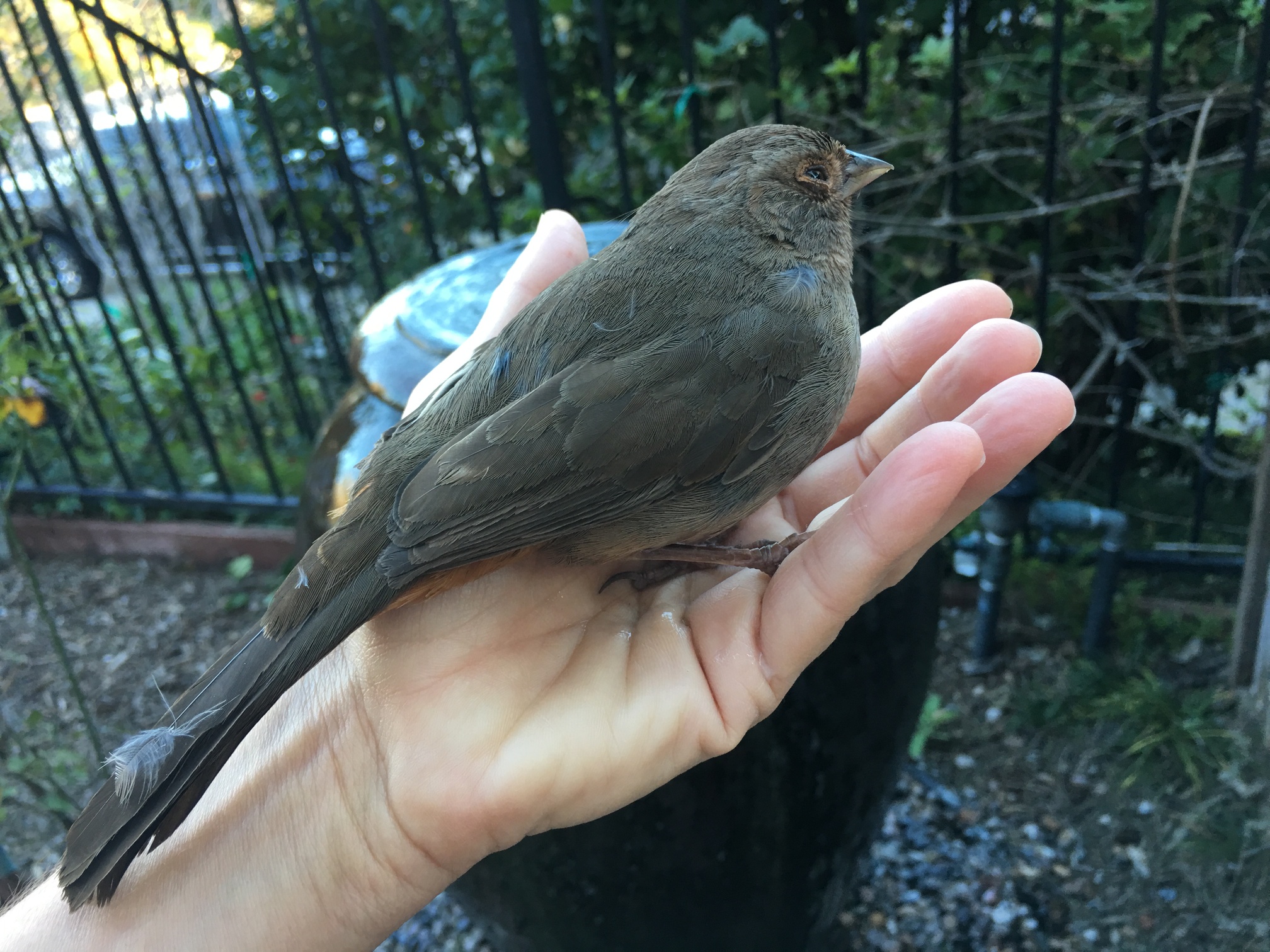
A bird in the hand was worth a lot this morning. As I sat eating breakfast, distracted by two pooches and a kitty, we heard a big thump on the large bay window across the room. “Oy!” I thought, “That was one was really loud!” I looked up and noticed my bright blue sticky on the window must have fallen off and in its place were feather marks. I got up and peered through the window, and there was the downed little female Robin with her female friend grabbing her little feet trying to drag her back into the bushes to safety. She was also grabbing at her shaking her vigorously, almost violently. It was shocking to see how much grabbing and shaking her “friend” was doing to her.
For a few moments it felt like she might be attacking this poor almost dead bird and the questions I had were:
- Was she trying to kill it because she was considered weak
- When it comes to the downtrodden are these animals really violent
- Was she trying to shake it back to life
Many of you know how often I talk about the Vagal Nerve, a nerve that is deeply involved in our health and well-being. If you’ve ever seen an animal who has collapsed when it finally gets back up and is in a safer place it can start to shake and shiver. This is actually part of the Vagal Nerve system bringing us back on line, per se. There is much to talk about with this for sure, but what I saw with these two birds seemed more likely to be her friend grabbing and shaking her with such vigor in an attempt to bypass the “faint and imobile response.” Then to bring her to the next phase which is shake, and as Dr Peter Levine calls it, “discharge” of the extreme stress from nearly dying.
If so, this is an absolutely brilliant and ingenious strategy built into nature itself! A bird flies into a window, collapses and slightly shivers and shakes. The next bird immediately grabs at it trying to pull it to safety. But when that doesn’t work, she grabs at it, pouncing on it, pulling and shaking it like you’ve never seen before.
I peer out of the window and eventually the helping bird flies into the bushes for its own safety, but, all the while keeping a close eye on me.
This poor, sweet downed bird was clearly in a dire condition. I held her closely in my hands and did TTOUCH circles around her head and side of her face and neck. I could feel her shivering ever so slightly in my hands. I hummed to create a small level of vibration to see if she might feel it through my warm hands to help her feel herself again.
Meanwhile, a raven flew and perched closeby hoping for a quick and easy meal. Then we were buzzed by two male hummingbirds keeping their little eyes on us, too.
It was so interesting to be a part of nature being a part of us.
The raven gave up since I was clearly bigger than him and not letting go of this bird.
Her shivering slowed down and a few small breaths later, she opened one eye to see me, then the other. I opened my hands a little, but she stayed in them. I kept doing small circle and a quarter TTOUCH’s until she clearly began gaining her strength and whits about her.
Eventually, with my love and little nudge she flew out of my hands and landed on the fence between me and the bushes. As I walked back inside, two of her friends immediately flew on to the fence to greet her with their female screeches of welcome. They screeched and physically nudged her and together all three females flew away into a nearby hedge for rest and recuperation.
The gift of what I got to see was so amazing in nature’s ability to care and support itself.
What I saw reminded me how even in these delicate little creatures how our old innate systems can help bring us back to healing and living a full life in the world and our society.
I someone ever calls you a bird brain, just smile and say, “Thank you.”
I know I will. This bird in my hand was worth more than I could have ever imagined.
Thank you bird, thank you.
Elinor Silverstein
Wow! That’s an amazing experience you had with nature. I’ve never seen or heard of another bird coming to try to rescue a bird. Thank you for sharing.